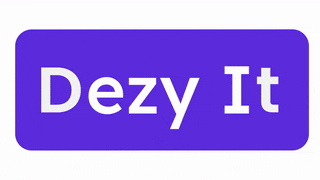
Small clinics in the UK face increasing financial and operational pressures, from rising admin costs to longer patient wait times. While traditional healthcare models rely on manual processes and staff-heavy operations, AI-powered solutions promise cost savings and efficiency gains.
But is AI truly a cost-effective investment for small clinics? This analysis breaks down the financial and operational trade-offs between AI-driven and traditional healthcare models.
1. The Costs of Traditional Healthcare Operations
Small clinics often struggle with high administrative overheads, limited staff capacity, and revenue leakage due to inefficiencies.
a) Staffing Costs & Administrative Burden
UK clinics spend 40-50% of their budget on administrative costs (NHS Digital, 2024).
Clinicians spend up to 2 hours per day on paperwork instead of patient care.
b) High Patient No-Show Rates
Missed appointments cost NHS England over £1 billion annually.
Manual scheduling struggles to remind, reschedule, and optimise bookings efficiently.
c) Slow Billing & Revenue Cycle Issues
Claim denials and errors account for a 15-20% revenue loss in small clinics.
Billing processes require manual input, increasing delays and mistakes.
With these inefficiencies, small clinics struggle to maintain profitability, leading many to explore AI-powered solutions.
2. The Cost Savings & Efficiency Gains of AI Integration
AI-driven practice management tools address key financial and operational pain points.
a) AI Automates Administrative Workflows
Conversational AI assistants handle patient inquiries, bookings, and follow-ups.
AI medical scribes reduce clinician documentation time by up to 80%, boosting productivity.
AI-powered smart scheduling reduces no-show rates by 40-50% with predictive analytics.
b) AI-Driven Billing & Revenue Cycle Management
Automated coding and claim submission lowers errors and increases reimbursement rates.
AI detects upcoding and fraudulent billing, protecting clinic finances.
NHS trusts piloting AI billing solutions report 20-30% faster claim processing times.
c) AI Reduces Staffing Costs Without Compromising Care
AI-enabled virtual assistants allow smaller admin teams to manage patient queries at scale.
Instead of hiring additional staff, AI tools increase efficiency with existing teams.
Financial Impact: Clinics integrating AI report a 25-40% reduction in operational costs, according to a 2024 UK HealthTech study.
3. Investment Considerations: Is AI Worth It?
Despite its benefits, AI implementation has upfront costs.
a) Initial AI Adoption Costs
AI-powered practice management software costs between £5,000 - £15,000 annually.
Integration with existing NHS or private systems may require additional IT support.
b) Staff Training & Adaptation
AI adoption requires staff buy-in and training to integrate new workflows smoothly.
Some clinics resist AI adoption due to fear of job displacement, requiring gradual transition strategies.
4. The Verdict: AI or Traditional Model?
AI Wins in:
✔ Long-term cost savings✔ Faster, more accurate billing & admin processes✔ Improved patient retention & reduced no-shows
Traditional Model Wins in:
✔ Lower upfront costs✔ No need for retraining staff✔ Less reliance on new technologies
For small UK clinics, AI adoption isn’t just a cost—it’s an investment in long-term sustainability. The shift may be gradual, but clinics that fail to adapt risk falling behind in an increasingly digital healthcare landscape.
Learn more:


Kommentarer